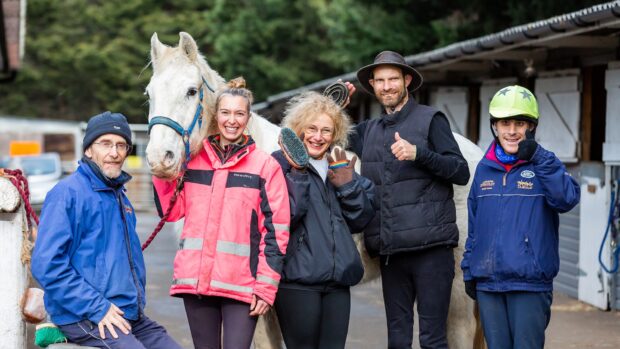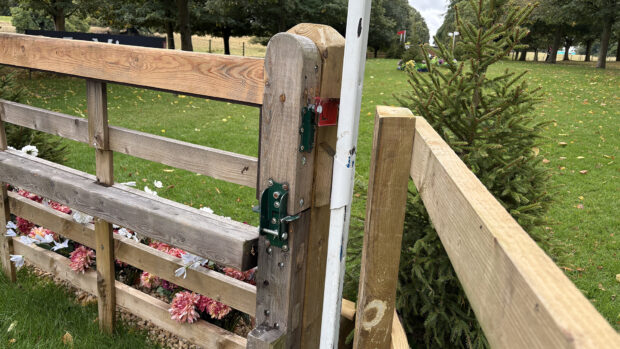WORK under way on creating a model for shared decision-making on equine euthanasia should help owners — and benefit horse welfare.
A review of end-of-life decision-making models used for dogs, cats and equids, conducted by PhD student Amelia Cameron of the University of Nottingham, found that although there has been work relating to domestic pets, there is very little concerning horses.
The review, essentially researching and collating all available evidence and research in the area, was funded by the Horse Trust and published in Vet Record.
Professor Sarah Freeman, who supervised the project, told H&H the research came after her previous studies on the horse-human relationship found that many owners suffered long-lasting guilt after a horse was put down. The idea of shared decision-making is that all those involved with a horse have input, so the owner does not feel alone in making the call.
“Shared decision-making has been around in human medicine, in terms of critical care, for a while but it’s relatively new to veterinary medicine,” she said. “And what has been done is mostly about dogs and cats; no-one’s thought about making those decisions for horses.”
Prof Freeman said, as H&H has previously reported, that delayed euthanasia is a major equine welfare issue. She added that a number of the UK’s leading equine charities have “excellent” support available for horse owners considering and after end-of-life decisions.
“But when you ask people, the majority, over 80%, haven’t heard of them,” she said. “Those who had accessed them said they were very useful but most people don’t know the support is there. We’re not talking about it, and the title of Amelia’s PhD is Let’s Talk about Euthanasia. It’s about trying to break down the barriers and to get people to have the conversations.
“We need to talk about when the time is right and how to support people, and that’s really what this project is trying to do.”
Prof Freeman said the next step is to develop a model that would enable all those involved in a horse’s care, including yard owners, farriers and sharers, for example, to discuss the issues affecting the decision. The aim is to have two main impacts, on horses and on owners.
“It will still be a difficult decision but if you’re going through it with others, it’s an easier process and if you’re supported afterwards, that’s much better,” she said. “And from the horse’s point of view, making the decision at the right time, and on the right evidence, will be very important for their welfare.
“Delayed euthanasia has come up a number of times as one of the biggest welfare issues and we hope by opening the conversations, people will be better able to say ‘Actually, I’m not sure my horse is ok’, and hopefully avoid some of the horses who are left too long.”
British Equine Veterinary Association (BEVA) president Huw Griffiths told H&H he often tells clients who are considering when is the right time to put a horse down: “This is the most difficult, yet the most important, decision you will make for your horse.”
“As highlighted in this report, the key elements are those of collaboration, communication, and in my opinion empathy,” he said. “My role as a vet is to protect the welfare of the horse and this includes how and when the horse is euthanised. My oath is to protect the horse’s welfare during the entirety of its life, including its death. However, I also have a duty of care to my client, and this is where collaboration and communication are so important. As is the trust between the vet and the horse owner.
“BEVA has created various member services to support our membership through this sensitive process. There is never a “one size fits all” in veterinary medicine. The best outcomes are an intricate hybrid of evidence base, tailored to an individual situation. Our guidelines provide a framework for vets to best achieve the most appropriate and least stressful outcome.
“The recent publication refers to a lack of evidence in the literature on veterinary decision-making models, particularly in relation to equine euthanasia. While I always support and encourage evidence, which is the cornerstone of good veterinary medicine, our horse owners are blessed with some of the most caring veterinary professionals in the world, and our horses benefit hugely from this on a daily basis. Nonetheless, end-of-life decision making is an emerging field and is gaining increasing interest. I support the paper’s authors and hope that this area will continue to receive further research attention, which will help vets dealing with all companion animals to understand better how to get the most out of shared decision-making.”
You might also be interested in:

How the human-horse relationship affects our most important decisions *H&H Plus*

Better a week early than a day late: the hows and whens of equine euthanasia

Equine euthanasia: what you really need to know
Saying goodbye to a much-loved horse is never easy, but help yourself be prepared for this sad time with Horse

Subscribe to Horse & Hound magazine today – and enjoy unlimited website access all year round
Horse & Hound magazine, out every Thursday, is packed with all the latest news and reports, as well as interviews, specials, nostalgia, vet and training advice. Find how you can enjoy the magazine delivered to your door every week, plus options to upgrade your subscription to access our online service that brings you breaking news and reports as well as other benefits.




